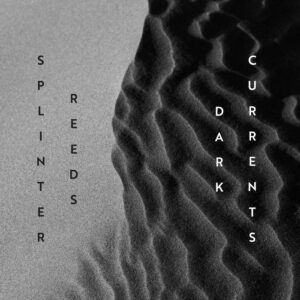Splinter Reeds – Dark Currents (Recording Review)
Splinter Reeds – Dark Currents (Cantaloupe)
Splinter Reeds, the West Coast’s first wind quintet, has distinguished themselves as advocates for living composers. Dark Currents, their latest recording for Cantaloupe, features two twenty-ish minute long pieces, Tall Grass (2022) by the totalist composer and Bang on a Can member Michael Gordon, and Antenna Studies (2018) by Paula Matthusen, a professor at Wesleyan who is one of the finest experimental electronic composers of her generation; both works were written for Splinter Reeds.
Gordon has steadily developed an eclectic musical language that exhibits fluency and variety in large scale forms. The entire first section of Tall Grass is about ascent, with overlaid ostinatos in polyrhythms reaching for the skies. Alongside the melodic material are held notes that accompany and intersperse them, as well as periodic rests. The lines drop out for a long held altissimo note, then resume, the bass clarinet joining with a microtonal scale. The brakes are put on the section by a held low note, followed by an effects-filled solo from the bass clarinet. In the next section, the material slows, creating triadic arpeggiations that both ascend and descend, with octave leaps in the bass. It is like the aural equivalent of a close-up. A chorale-like passage ensues, and the section cadences in mid-register octaves and trills. The fast tempo returns with the melody ghosted in pairs and passages of hemiola that gradually unravel into their constituent elements and then knit back together, punctuated by multiphonics. The slow tempo returns in a soft, mysterious section. A galloping fortissimo passage announces the piece’s climax, rife with repeated notes. A denouement provides a slender version of the piece’s original ascent, and Tall Grass ends with an inconclusive single note.
Matthusen’s Antenna Studies starts pianissimo with half tuned-in radio blasts and held sine tones, and sampled percussion, followed by non-pitched wind sounds, such as breath and pops. Sustained single tones in the winds enter on the same pitch as the electronics and accompanied by flashes of radio static. Brief canonic passages are introduced, with secundal intervals and deliberate detuning used to create beats. Sustained bass clarinet arrives two octaves lower, working its way up harmonic partials, soon followed up an octave and then haloed by electronics. The entire group soon engages in holding notes and hocketing in various registers. An interlude contains repeating patterns, warm synth chords, a held altissimo note and, once again, a plethora of non-pitched wind sounds. Overlapping mixed interval scales, the winds re-enter as the electronics recede to an upper register drone. A general crescendo is sculpted from repeated notes in the winds and another secundal tune, this time in the electronics. Uptempo ostinatos, interspersed by a tart chord, continue alongside a wide registral swath of electronics. There is a long decrescendo in which a sampled voice joins sustained winds, closing with the electronics and acoustic instruments finally on equal footing
The two pieces that are on Dark Currents contrast well. Both are strong additions to their respective composers’ catalogs that benefit from skillful playing and artful musicality by Splinter Reeds. Recommended.
- Christian Carey
